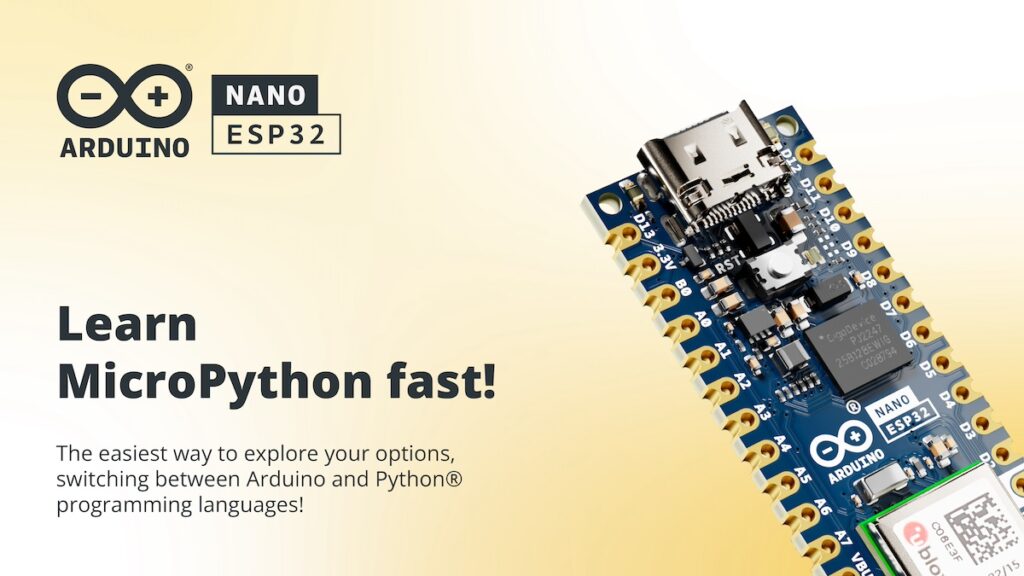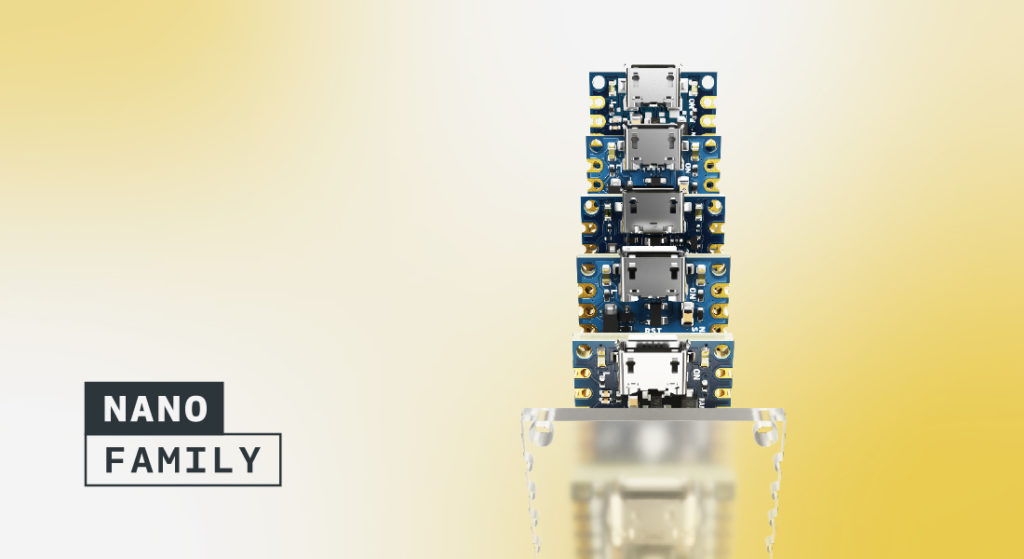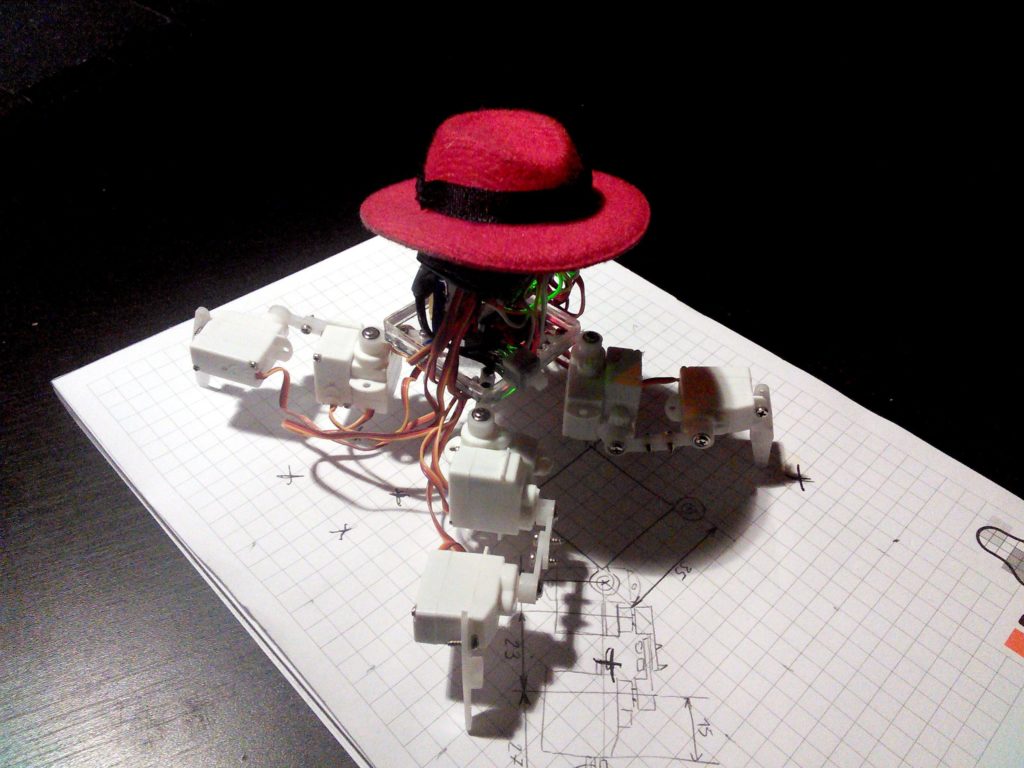Great things come in tiny packages: Get started with Arduino and MicroPython today

In the past, DIY tech enthusiasts faced limitations when it came to creating small and intricate projects. However, the introduction of technologies like MicroPython and tiny microcontroller boards such as the Arduino Nano revolutionized the field. This enabled makers to build genuinely projects like wearables, miniature robotics, and ultra-thin gadgets, ushering in a new era of innovation. In this article, we’ll explore MicroPython, its utility, the capabilities of the Arduino Nano family, and showcase some shrunken-down project examples.
What is MicroPython (and why does it matter)?
The Python programming language dates back to 1991, and is one of the most widely-known and used languages out there.
In 2014, a more lightweight version of Python was released, with the goal of being run on microcontrollers and other small systems. Thus, MicroPython was born and a new era of engineering began.
What does MicroPython bring to the table? Let’s take a look at some of the advantages:
- It’s simple, allowing developers to write code in the famously accessible Python language.
- It’s designed for small-scale projects and is able to operate with limited resources.
- It’s versatile, and has the ability to work across a range of different microcontroller platforms.
- It’s been used, successfully, in countless projects including Internet of Things devices, robotics, sensors and much more.
Understanding Nano boards
Now let’s look at the second ingredient in creating amazing, tiny projects — Nano boards. Developed by Arduino, these boards consist of a microcontroller unit, input and output pins, and components like LEDs and sensors.
Here’s what they offer:
- A compact design, making them perfect for projects where space is a key concern.
- A range of digital and analog input/output pins that can be easily programmed for more versatility.
- They’re cost-effective and easy to find.

Why small projects matter in tech
Do the best things actually come in small packages? Not always, but in the world of tech, this rings pretty true a lot of the time.
While big, grand creations are valuable too, smaller-sized projects have an incredibly useful role to play. Let’s take a look at why fun-sized designs are so important.
- Space efficiency: Unlike their bigger counterparts, physically small projects don’t require much space, making them ideal for use in more compact environments like homes, or where more discrete and unobtrusive solutions are required — for example an automated hearing aid.
- Expandable: Smaller projects are more modular — you can start with one piece and then add new parts as you go, based on your needs and new ideas.
- Accessible: Small projects are simpler to start and cheaper to build, making them great choices for beginners or people with limited resources or financial constraints. They’re a great gateway to the world of home automation and DIY tech.
- Customizable: Smaller projects are easy to tweak and adapt, making them more suited to customisation. This lets you build projects in exactly the way you desire and amend them over time.
- Prototyping potential: Smaller hardware projects make great prototypes for bigger and more resource-heavy work. They enable you to experiment with different hardware components and concepts on a cheaper and lower-stakes scale before committing to a big, expensive project.
- Compatibility with bigger systems: Platforms like Arduino’s Nano boards and MicroPython tend to be highly compatible with larger systems like home automation networks. This makes it effortless to integrate your smaller projects into your overall setup.
- Lower power consumption: Thanks to their size, small-scale projects tend not to use up huge amounts of power, and are often built with energy efficiency in mind. This is not only good for the planet, but it also means your smaller projects can run for extended periods of time without the need for constant recharging.
Using Arduino with MicroPython
Now we have some idea of why small projects are so significant, let’s talk about how to start making them with Arduino and MicroPython.
If you remember, one of the great things about MicroPython is its simplicity — you don’t need to be a tech prodigy to learn the basics and start tinkering around with this language. It’s also highly established and there are a ton of resources and documentation for using this language across a number of different boards.
It’s imperative to keep in mind that programming an Arduino board with MicroPython is a very different process to using the Arduino IDE.
Here’s a quick guide to getting started with MicroPython on an Arduino board:
1. Install MicroPython on your Arduino board, and then load a Python script — called a script.py.
2. Download the Arduino Lab for MicroPython. This is a lightweight editor built to enable interaction between your computer and your Arduino board. It allows you to perform tasks like selecting a port and loading scripts.
3. Download the OpenMV editor. This platform enables you to program Arduino boards using a fork of the MicroPython language. The editor lets you upload scripts directly to the board and get started with your very first projects.
Arduino examples
There are currently five Arduino boards that officially support MicroPython:
For a smart maker with imagination, the possibilities are almost endless here. Let’s explore a couple examples of small but spectacular Arduino projects brought to life with MicroPython.
Pico-Kubik quadruped robot
Big robots are so last century.
These days, the really cool kids are building tiny robots. Like this one, the Pico-Kubik robot built by Radomir Dopieralski.
It’s the latest in a line of quadruped robots, and this one is small enough to fit in the palm of your hand. One of the two versions runs MicroPython, and even carries its own webcam.

InkPlate 10
With the right tools, it’s possible to build projects that are literally paper-thin.
Enter the InkPlate 10 — a 25cm ePaper display that can be programmed using Arduino and MicroPython. It’s a razor-thin tablet that can be easily programmed, and is made from recycled kindles and similar tech. It’s also available at a very wallet-friendly price point.
The future of tiny tech
As time goes on, we’ll be able to build smaller and smaller projects. This means the future for tiny tech is truly exciting, with some fascinating potential use cases on the horizon. Here’s a glimpse at some things to look forward to here:
- AI integration: As small hardware becomes capable of running lightweight AI models, we could see the emergence of new functions like tiny smart cameras with object recognition.
- Low-power designs, with tiny tech projects using increasingly sustainable resources: The ability to run for longer and use renewable energy sources and battery technology will allow for more efficient and eco-friendly designs.
- Even smaller projects: As the technology around Nano boards and programming continues to develop, it’ll be possible to create smaller and smaller projects, opening the doors to even more possibilities in areas like wearables and healthcare devices.
- Better connectivity: Small projects will be able to use technologies like 5G and Wi-Fi 6 more easily and smoothly, allowing for more versatile applications like remote control and use in IoT networks.
- Open-source communities: As open-source communities for hardware and software continue to grow and develop, we’ll see even more shared knowledge and libraries of open-source code aimed at helping developers and makers create their own tiny projects.
- More diverse uses for tiny tech: In the future, we could see even wider applications for this kind of technology, from wearable health monitors and highly precise farming sensors to new ways of monitoring the environment.
- A greater focus on security: As tiny tech becomes more common, it’ll also become more of a target for hackers. This will prompt a push to take security more seriously here, driving more sophisticated and smart approaches to device safety.
Embrace tiny tech with Arduino
The future for tiny tech projects is truly exciting. Today’s makers and tech enthusiasts have access to a wealth of tools, techniques, and learning resources that is growing rapidly, all the time.
At Arduino, our Project Hub is filled with examples of smaller projects. Our Nano boards give you the tools to break through new frontiers of creativity and innovation, taking your smart home and DIY projects to the next level.
Contact us to learn more about Nano boards and Arduino in general, and get started today.
Leave a Reply
You must be logged in with your Arduino account to post a comment.